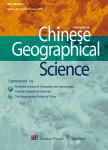Response of Artificial Grassland Carbon Stock to Management in Mountain Region of Southern Ningxia, China
Response of Artificial Grassland Carbon Stock to Management in Mountain Region of Southern Ningxia, China作者机构:School of Human Settlements and Civil Engineering Xi'an Jiaotong University College of Geology and Environment Xi'an University of Science and Technology State Key Laboratory of Soil Erosion and Dryland Farming on the Loess Plateau Institute of Soil and Water Conservation Chinese Academy of Sciences and Ministry of Water Resources
出 版 物:《Chinese Geographical Science》 (中国地理科学(英文版))
年 卷 期:2014年第24卷第4期
页 面:436-443页
核心收录:
学科分类:0303[法学-社会学] 090503[农学-草业科学] 0909[农学-草学] 0905[农学-畜牧学] 0708[理学-地球物理学] 09[农学] 0705[理学-地理学] 0903[农学-农业资源与环境] 0813[工学-建筑学] 0704[理学-天文学] 0833[工学-城乡规划学]
基 金:Under the auspices of Strategic Priority Research Program of Chinese Academy of Sciences(No.XDA05000000) National Natural Science Foundation of China(No.41271518) Sci-technology Project of Shaanxi Province(No.2013kw19-01)
主 题:artificial Medicago sativa L. (alfalfa) grassland clipped grassland abandoned grassland carbon sink carbon density mountain region southern Ningxia
摘 要:Grassland is a major carbon sink in the terrestrial ecosystem. The dynamics of grassland carbon stock profoundly influence the global carbon cycle. In the published literatures so far, however, there are limited studies on the long-term dynamics and influential factors of grassland carbon stock, including soil organic carbon. In this study, spatial-temporal substitution method was applied to explore the characteristics of Medicago sativa L. (alfalfa) grassland biomass carbon and soil organic carbon density (SOCD) in a loess hilly region with different growing years and management patterns. The results demonstrated that alfalfa was the mono-dominant community during the cutting period (viz. 0-10 year). Community succession began after the abandonment of alfalfa grassland and then the important value of alfalfa in the community declined. The artificial alfalfa community abandoned for 30 years was replaced by the S. bungeana community. Accordingly, the biomass carbon density of the clipped alfalfa showed a significant increase over the time during 0-10 year. During 0-30 year, the SOCD from 0-100 cm of the soil layer of all 5 management patterns increased over time with a range between 5.300 ± 0.981 kg/m2 and 12.578 ± 0.863 kg/m2. The sloping croplands had the lowest SOCD at 5.300 ± 0.981 kg/m2 which was quite different from the abandoned grasslands growing for 30 years which exhibited the highest SOCD with 12.578 ± 0.863 kg/m2. The ecosystem carbon density of the grassland clipped for 2 years increased 0.1 kg/m2 compared with the sloping cropland, while that of the grassland clipped for 10 years substantially increased to 10.30 ± 1.26 kg/m2. Moreover, the ecosystem carbon density for abandoned grassland became 12.62± 0.50 kg/m2 at 30 years. The carbon density of the grassland undisturbed for l0 years was similar to that of the sloping cropland and the grassland clipped for 2 years. Different management patterns imposed great different effects on the accumulation of bio



